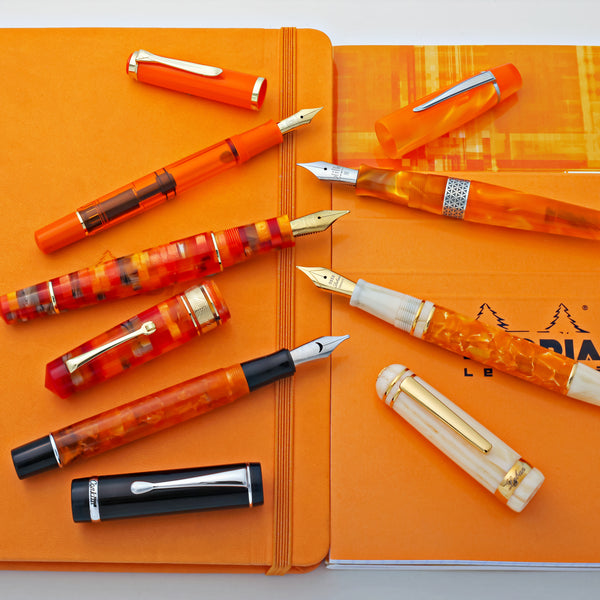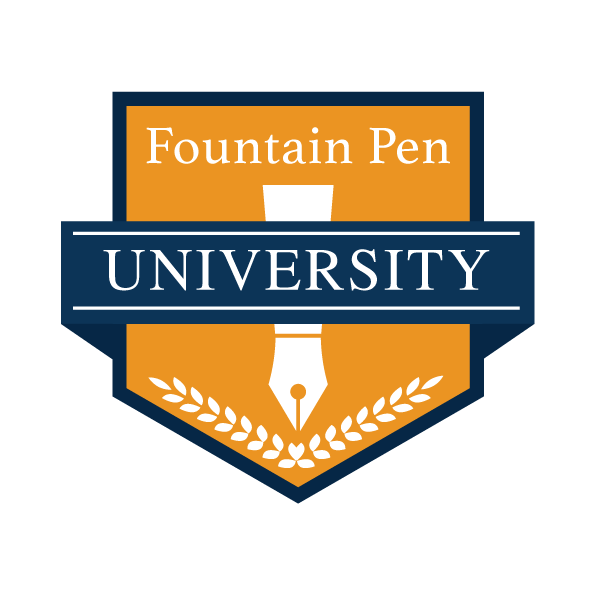Getting Things Done with Pen and Paper
Thousands, if not millions of people have mastered their workflow thanks to the modern-day Bible of office productivity, Getting Things Done: The Art of Stress-Free Productivity by David Allen.
In the book, he describes a system of processing all of life's various "inputs" while maintaining peace of mind. When it comes to thinking about organization and adopting a new method of working, many of us can imagine an afternoon spent trolling the aisles at Staples, grabbing everything off of a all-encompassing checklist. Part of the adaptability of Allen's system is that you don't need to overhaul your office with the latest whiz-bang doo-dads and leather-covered "uni-taskers" (as Food Network's Alton Brown says). You simply utilize the equipment you have now in a more efficient manner.
While Allen does acknowledge the usefulness (and our dependence on) technological devices such as PDA's, Palm Pilots, iPods and the like, his main focus is to have your system be dependable and easy to use. It has to adapt to your own preferences for recording information and lists in order for it to be more useful and welcoming to the user. As Allen writes, "great tools can trigger good thinking."
For many of us pen lovers, using a fountain pen or other fine-writing instrument creates a satisfying, pleasing interaction between its user and the task at hand. Although you may be "slowing yourself down" by writing with pen and paper, the satisfaction that is created from the experience positively reinforces your desire to keep organized and stick with the GTD System.
Pen and paper also has another advantage over the digital in the issue of trust. Allen points out that trusting your methods of collection, knowing that your in-box will always be kept in the same place, is essential for peace of mind. The problem with electronic devices is that their information can become inaccessible due to loss of battery power and data corruption. Sure, pen and paper does have its vulnerabilities like fire and water damage. However, psychologically, the tangible aspect of the written word tends to give us more confidence that the work completed retains more permanence over time than the fleeting informational superhighway.
Most adopt a blended approach to input collection, using digital devices and old-fashioned pen and paper. For instant thought collecting, Allen recommends :
For the seasoned GTD professionals that are pen enthusiasts, how does a nice pen work within your personal productivity system? Does your pen service as a note and thought jotter or is it more reserved for specific functions like filling out written forms?
In the book, he describes a system of processing all of life's various "inputs" while maintaining peace of mind. When it comes to thinking about organization and adopting a new method of working, many of us can imagine an afternoon spent trolling the aisles at Staples, grabbing everything off of a all-encompassing checklist. Part of the adaptability of Allen's system is that you don't need to overhaul your office with the latest whiz-bang doo-dads and leather-covered "uni-taskers" (as Food Network's Alton Brown says). You simply utilize the equipment you have now in a more efficient manner.
While Allen does acknowledge the usefulness (and our dependence on) technological devices such as PDA's, Palm Pilots, iPods and the like, his main focus is to have your system be dependable and easy to use. It has to adapt to your own preferences for recording information and lists in order for it to be more useful and welcoming to the user. As Allen writes, "great tools can trigger good thinking."
For many of us pen lovers, using a fountain pen or other fine-writing instrument creates a satisfying, pleasing interaction between its user and the task at hand. Although you may be "slowing yourself down" by writing with pen and paper, the satisfaction that is created from the experience positively reinforces your desire to keep organized and stick with the GTD System.
Pen and paper also has another advantage over the digital in the issue of trust. Allen points out that trusting your methods of collection, knowing that your in-box will always be kept in the same place, is essential for peace of mind. The problem with electronic devices is that their information can become inaccessible due to loss of battery power and data corruption. Sure, pen and paper does have its vulnerabilities like fire and water damage. However, psychologically, the tangible aspect of the written word tends to give us more confidence that the work completed retains more permanence over time than the fleeting informational superhighway.
Most adopt a blended approach to input collection, using digital devices and old-fashioned pen and paper. For instant thought collecting, Allen recommends :
Keep good writing tools around all the time so you never have any unconscious resistance to thinking due to not having anything to capture it with. If I don't have something to write with, I can sense that I'm not as comfortable letting myself think about projects and situations.
Conversely, I have done some great thinking and planning at times just because I wanted to use my nice-looking, smooth-writing ballpoint pen! You may not be inspired by cool gear like I am, but if you are, do yourself a favor and invest in quality writing tools.
I also suggest that you keep nice ballpoint pens at the stations where you're likely to want to take notes - particularly near the phones around your house.
For the seasoned GTD professionals that are pen enthusiasts, how does a nice pen work within your personal productivity system? Does your pen service as a note and thought jotter or is it more reserved for specific functions like filling out written forms?



